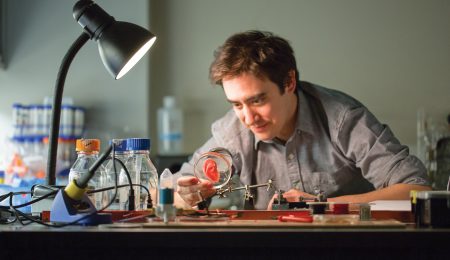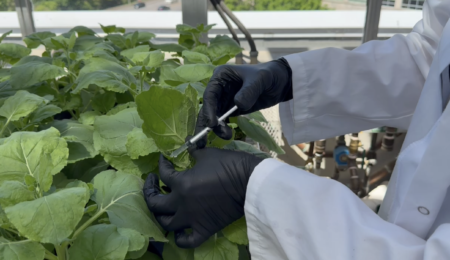Rudnicki discusses his interests in the function of stem cells in adult skeletal muscles
Originally published on Dec. 8, 2010
The problem
HAS IT EVER amazed you how quickly children seem to recover from injuries? Tumbles and falls are just part of everyday play. But it’s not what it’s like for adults — or grandparents for that matter. Falling or breaking a bone can be a dangerous event, because injuries are not easily healed.
Why is that?
The foundation of the muscles’ repair system is a particular group of stem cells called satellite cells. Unlike most cells in the body, stem cells don’t have a unique type. Instead, they have the ability to transform into any specialized cell that is required by the body. This talent allows them to regenerate injured tissue by replenishing the old and damaged cells.
But satellite cells aren’t as industrious in adults as they are in children. In fact, their activity diminishes as we age. They’re still in the body, but if modern medicine wants to harness them for directed muscle repair, the stem cells will require stimulation.
The researcher
Dr. Micheal Rudnicki is the director of the regenerative Medicine Program at the Sprott Center for Stem Cell Research Institute. His laboratory researches the molecular mechanisms that control stem cells during tissue regeneration.
The project
One of Rudnicki’s special interests is in the function of stem cells in adult skeletal muscle — the muscle attached to bones by fibrous tendons.
Satellite cells may be the foundation of the muscle’s repair system, but they certainly don’t work alone. Ridnicki’s work stressed that myogenesis, the formation of muscle tissue, requires coordination between many different cells.
The key
A key player in myogenesis is a group of cells called fibro/adipogenic progenitors (FAPs). Rudnicki found that in healthy muscle, FAPs are dormant, but, in the event of acute muscle damage, they rapidly multiply.
That’s because FAPs are the distress beacon that signals the satellite cell. Rudnicki’s research shows that FAPs encourage the satellite cells to get active and to fuse with damaged muscle fibres or produce new fibres entirely. FAPs do this by establishing a specialized environment in the damaged muscle that facilitates the satellite cells. In myogenesis, FAPs stimulate satellite cells to regenerate muscle. In children, FAPs stimulate satellite cells and then are free to leave once myogenesis is complete; however, in elderly muscle, FAPs become firmly engrafted to the damaged site, and can no longer move on to the next injury.
Facts about this article:
- Shendruk was a science columnist for The Fulcrum from 2011 to 2013, his sister Amanda Shendruk was the Fulcrum’s editor-in-chief in 2010-11.
- Tyler Shendruk received his PhD thesis in theoretical and computational studies of hydrodynamics-based separation of particles and polymers in microfluidic channels, from the University of Ottawa in 2014.
- Currently, Shendruk is a research fellow at the Center for Studies in Physics and Biology at the Rockefeller University in New York, US.
- Was published in the Fulcrum’s 71st volume.





